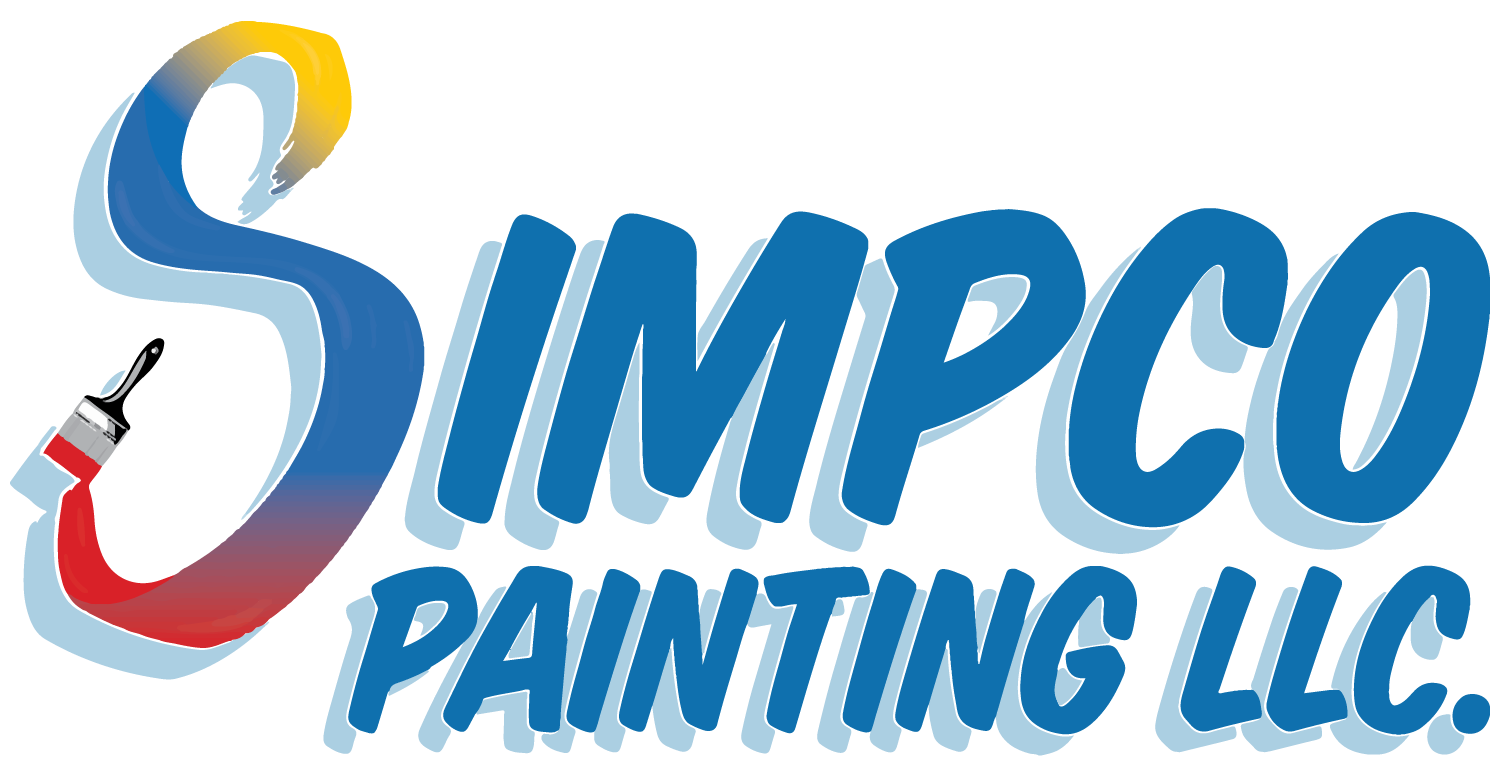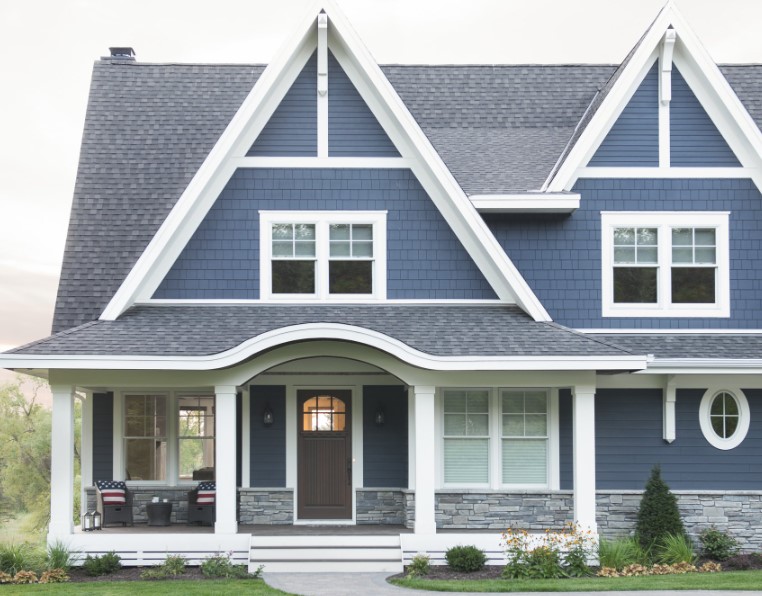Interior and exterior paints differ significantly. Interior paint is tailored for indoor use, offering features like scuff resistance and various finishes. Exterior paint is built to withstand outdoor elements, providing protection from UV rays and weather conditions. These distinctions help you choose the right paint for your specific needs.
Lets get more into the detail…
When it comes to painting your home or commercial space, choosing the right type of paint is crucial for achieving a long-lasting and visually appealing result. At Simpco Painting, your trusted interior painters in Richmond, VA, we understand the importance of making an informed choice. Let’s explore the key differences between interior and exterior paint options to help you decide which one suits your specific needs.
Composition and Formulation
Interior Paint Composition
Interior paints are specially formulated to meet the needs of indoor spaces. They consist of a mixture of various components designed to create a durable and visually pleasing finish. Here are the key components found in interior paint:
- Pigments: Interior paints contain pigments that give color to the paint. These pigments are finely ground particles that provide the desired hue when mixed with the base.
- Binders: Binders, also known as resins, are substances that hold the pigments together and adhere them to the painted surface. In interior paint, binders are typically water-based (latex) or oil-based (alkyd).
- Solvents: Solvents are liquids that help keep the paint in a liquid state until it’s applied. In water-based interior paints, water serves as the solvent, while oil-based paints use organic solvents.
- Additives: Additives are included to enhance various properties of the paint, such as drying time, mold resistance, and coverage.
Exterior Paint Composition
Exterior paints are specifically engineered to withstand the elements and protect your building’s exterior surfaces. They have a different composition compared to interior paints. Here’s what you’ll typically find in the composition of exterior paint:
- Pigments: Similar to interior paint, exterior paints also contain pigments for color. However, they often have more pigments to provide better UV resistance and color retention.
- Binders: Exterior paints use binders that are more robust and weather-resistant than those found in interior paints. Acrylic and elastomeric binders are commonly used to create a flexible and durable finish.
- Solvents: Exterior paints may contain solvents to aid in application and drying, but they are generally formulated to be low-VOC (volatile organic compound) to meet environmental regulations.
- Additives: Exterior paint additives are selected to enhance weather resistance, mold and mildew resistance, and overall durability in harsh outdoor conditions.
Appearance and Finish
Interior Paint Finish Options
When it comes to interior paint, the finish you choose can significantly impact the appearance of your walls. Here are some common interior paint finish options:
- Flat Finish: A flat finish, also known as matte, has a non-reflective surface. It’s excellent for concealing imperfections on walls but may not be as easy to clean as other finishes. It gives a soft, velvety appearance to your walls.
- Eggshell Finish: An eggshell finish has a subtle sheen that falls between flat and satin. It’s a popular choice for living rooms and bedrooms as it offers a slight washability advantage while maintaining a more matte appearance.
- Satin Finish: Satin finishes have a gentle shine and are easier to clean than flat or eggshell finishes. They are often used in areas prone to moisture or high traffic, such as kitchens and bathrooms.
- Semi-Gloss Finish: Semi-gloss finishes provide a noticeable sheen and are highly durable. They are perfect for trim, doors, and areas that require frequent cleaning due to their ability to resist stains and moisture.
Exterior Paint Finish Options
The finish of your exterior paint not only affects the curb appeal of your property but also plays a crucial role in protecting it from the elements. Here are common exterior paint finish options:
- Flat Finish: Exterior flat finishes, like their interior counterparts, have a matte appearance. They are suitable for siding and other large surfaces but may require more maintenance, as they are less resistant to dirt and weathering.
- Satin Finish: Satin exterior finishes provide a subtle gloss and are popular for their durability and ease of cleaning. They work well on a variety of exterior surfaces, including wood, stucco, and metal.
- Semi-Gloss Finish: Semi-gloss exterior finishes offer a noticeable sheen and exceptional durability. They are commonly used on doors, shutters, and trim, as they can withstand exposure to the elements and provide a polished look.
- Gloss Finish: Gloss finishes provide a high level of sheen and are the most durable option. They are often used on surfaces that require maximum protection, such as railings and outdoor furniture. However, their shiny appearance may not be suitable for large exterior areas.
Durability and Weather Resistance
Interior Paint Durability
When it comes to interior paint, durability is often measured in terms of how well it can withstand everyday wear and tear. Here’s what you should consider regarding the durability of interior paint:
- Scratch and Scuff Resistance: Interior paints are typically designed to resist minor scratches and scuffs, making them suitable for areas with moderate traffic like living rooms and bedrooms.
- Stain Resistance: Some interior paints come with stain-resistant properties, making it easier to clean and maintain the appearance of your walls, especially in dining areas and children’s rooms.
- Mildew and Mold Resistance: Bathrooms and kitchens can be prone to humidity, which may lead to mildew and mold growth. Look for interior paints with mildew and mold-resistant features for these spaces.
Exterior Paint Weather Resistance
Exterior paint faces the challenge of harsh weather conditions year-round. Its ability to withstand these conditions is vital for the longevity of your home’s appearance. Here’s what you should know about the weather resistance of exterior paint:
- UV Protection: Exterior paint should have UV-resistant properties to prevent color fading and maintain a vibrant appearance, especially in sunny climates.
- Waterproofing: To protect against rain and moisture, exterior paint should form a waterproof barrier that prevents water from seeping into the building’s structure.
- Temperature Tolerance: Exterior paint must be capable of expanding and contracting with temperature fluctuations, preventing cracks and peeling during extreme weather conditions.
- Mold and Mildew Resistance: Like interior paint, exterior paint should also be resistant to mold and mildew growth, as damp conditions can lead to these issues on outdoor surfaces.
- Longevity: The overall lifespan of exterior paint is essential. A high-quality exterior paint should last for several years without requiring frequent repainting.
Application and Usage
Interior Paint Application
When it comes to painting the interior of your home or commercial space, the application process plays a significant role in achieving a satisfactory result. Here are some key considerations for interior paint application:
- Surface Preparation: Before applying interior paint, ensure that the surface is clean, dry, and free from dust and debris. Sanding and patching any imperfections is crucial for a smooth finish.
- Priming: In some cases, applying a primer is necessary, especially on new drywall or surfaces with stains. Primer helps the paint adhere better and can improve color consistency.
- Painting Techniques: Use appropriate painting techniques, such as cutting in (painting edges and corners with a brush) and rolling (applying paint with a roller), to achieve even coverage. Avoid leaving brush marks or roller lines.
- Ventilation: Adequate ventilation is essential when painting indoors. Open windows and use fans to ensure proper airflow and to help paint fumes dissipate quickly.
- Drying Time: Allow each coat of paint to dry completely before applying additional coats. Follow the manufacturer’s recommendations for drying times between coats.
Exterior Paint Usage Tips
When it comes to exterior paint, the environment and weather conditions play a significant role in the application and usage. Here are some tips for using exterior paint effectively:
- Clean Surfaces: Before painting exteriors, thoroughly clean surfaces to remove dirt, mildew, and loose paint. Pressure washing can be an effective method for cleaning.
- Repairs: Address any structural or surface repairs before applying exterior paint. This includes fixing cracks, replacing damaged siding, and ensuring the surface is sound.
- Weather Conditions: Pay attention to the weather forecast. Avoid painting in extreme heat, cold, or rainy conditions. Ideal painting temperatures are typically between 50°F to 85°F (10°C to 29°C).
- Proper Tools: Use the right tools and equipment, such as brushes, rollers, and sprayers, for the job. Quality tools can make a significant difference in the final result.
- Coat Thickness: Apply the recommended number of coats as per the manufacturer’s instructions. Thicker coats do not necessarily provide better protection and may lead to issues like peeling.
- Maintenance: Regularly inspect the exterior paint for signs of wear and tear, such as peeling or fading. Touch up areas as needed to prolong the life of the paint job.
Final Words:
Choosing between interior and exterior paint involves considering various factors like composition, appearance, durability, and application. At Simpco Painting, we offer expert painting services for both residential and commercial spaces in Richmond, VA.
Whether you need your living room refreshed or your business exterior revamped, we have the expertise to deliver top-quality results. Contact us today at 804-840-9419 or visit our website Simpco Painting to schedule a consultation with the leading interior painters in Richmond, VA.
Let us transform your space with a fresh coat of paint that not only looks great but also stands the test of time.

